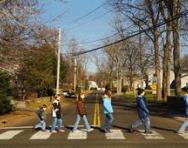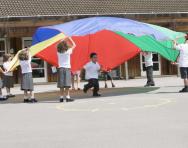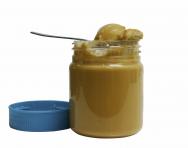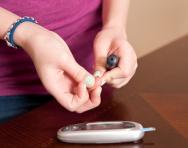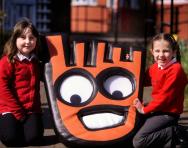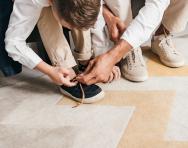Essential first aid skills for your primary school child
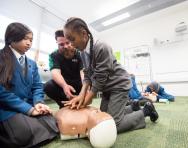
Sprains and strains, cuts and bruises, broken bones and asthma attacks… It sometimes seems that there’s no end of scrapes that children can get into. But would your child know what to do if one of their friends had an accident or emergency?

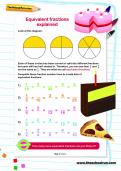
Boost Your Child's English & Maths!
- Weekly programme for each school year
- Worksheets sent direct to your inbox
- Keeps your child's learning on track
Every year, St John Ambulance broadcast its Big First Aid Lesson live to at least 130,000 schoolchildren to help them learn what to do in a series of common emergency situations.
According to St John Ambulance, seven out of 10 children say they wouldn’t know how to help if someone was hurt but would like to learn first aid, and Schools Development Officer Joe Willacy believes it’s an important skill for every child. ‘Primary school children are more than capable of learning first aid skills, and we’ve heard of a number of young people who have helped in emergency situations, either by administering first aid themselves or by giving others direction on what to do,’ he says.
Here’s our guide to the basic skills that could turn your child into a lifesaver.
Check the situation
The first step is for your child to make sure that the situation is safe before they try to help. ‘We want to avoid children putting themselves in danger, so if there are hazards such as broken glass or traffic, we advise them to move to a safe place and call for help, either from a nearby adult or by calling 999,’ Joe advises.
Bleeding
- Press firmly on the wound using some clean fabric such as a dressing, a towel or an item of clothing.
- Raise the injured area so it’s higher than the person’s heart. This helps reduce the bleeding.
- Treat the person for shock by making them lie down with their head low and their legs raised.
Soft tissue injuries (sprains and strains)
- Look for signs of soft tissue damage such as bruising, swelling and pain.
- Use the RICE technique: get the person to rest the injured area, apply ice such as a packet of peas wrapped in a towel, compress the injury with a bandage or other padding to keep it comfortable, and elevate it to reduce swelling.
Broken bones
- Look for the signs of a break: they are a lot more painful than strains or strains, and there may be an obvious deformity.
- Immobilise the area – make the person comfortable so they can keep the injured part still. Don’t try to move them unless they are in danger.
- Call 999 for help.
Severe allergic reactions
- Get your child to talk to their friends about their allergies, the symptoms of a reaction and what triggers them. If they use an Epipen, talk to their parents about how to use it.
- Recognise the signs of a severe allergic reaction, such as: difficulty breathing, swollen tongue and throat, itchy or swollen eyes, blotchy skin, feelings of panic and signs of shock.
- Clear the area of the allergy trigger or remove the person from the area; help them to sit down comfortably, leaning forwards slightly to help their breathing.
- Call 999 as soon as possible.
Head injuries
- Get the person to sit down so that if they feel dizzy or lose consciousness, they won’t fall over.
- Put a cold compress on the area to reduce swelling.
- Keep watching the person to make sure they are alert and responsive. If they are, then their injury is probably minor, although someone should stay with them until they recover. If they become less responsive, call 999.
Asthma attacks
- Look for signs such as wheezing, coughing, struggling to breathe and panic.
- Get the person to rest comfortably, sitting down.
- Help the person to use their reliever inhaler straight away. If they’re no better after a few minutes, get them to take one or two puffs of their inhaler every minute until they’ve had 10 puffs. If they are still struggling, call 999.
Calling an ambulance
‘If your child knows nothing else, teaching them how to call an ambulance is really important and could save lives,’ says Joe.
- Tell the operator clearly that you need an ambulance.
- Clearly give the address of where you are, as accurately as possible. Let them know about any landmarks that will help them find the casualty.
- Give as much information as possible about the injury, especially whether the person is breathing or not – if they aren’t, the call will be treated as a priority.
- Look out for the emergency services arriving and let other people nearby let them know that they’re on their way so they can be directed to the right place.
St John Ambulance is encouraging parents to speak to their child’s school about the Big First Aid Lesson so that their child doesn’t miss out on learning these vital skills. The charity is also campaigning for first aid to be included in the National Curriculum.
First aid resources for children and educators
St John Ambulance has a wide range of resources on its website to help children learn about first aid, including free online resources for teachers to use in schools, as well as a YouTube channel with lots of videos demonstrating first aid techniques. Children can also join one of St John Ambulance's youth groups to learn important lifesaving skills.
BBC Teach offers a series of short films presented by Dr Emeka Okorocha which explore some key first aid skills for KS2 children, including how to make an emergency call, how to help someone who is choking and how to administer CPR.
The Red Cross also offers first aid skills pages for young people, with videos, case studies, key steps to action and quizzes for each of the first aid skills.
Image © St John Ambulance

Give your child a headstart
- FREE articles & expert information
- FREE resources & activities
- FREE homework help

